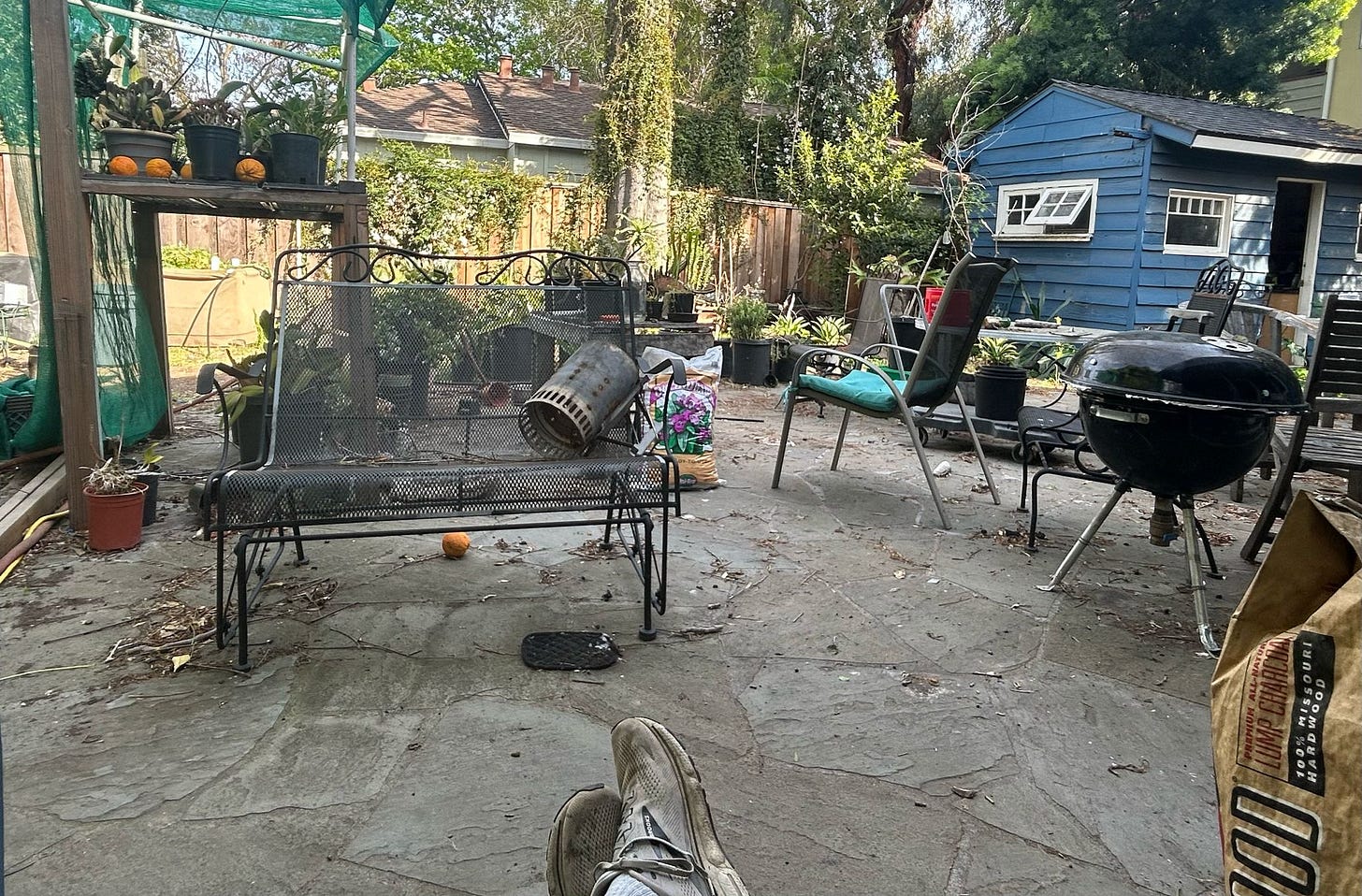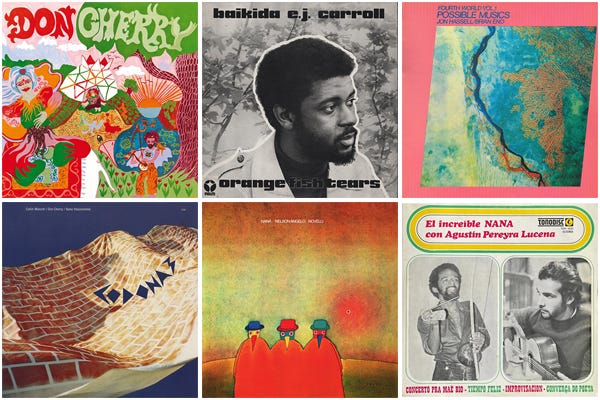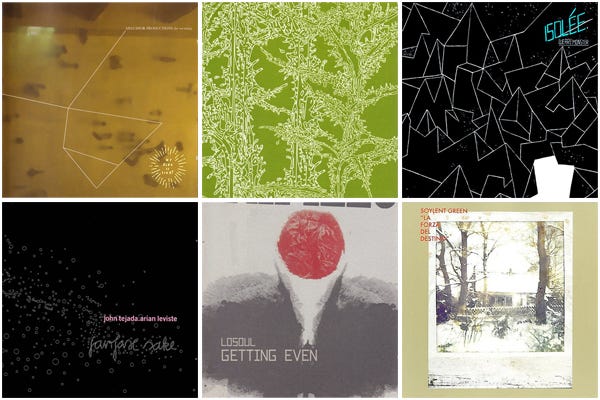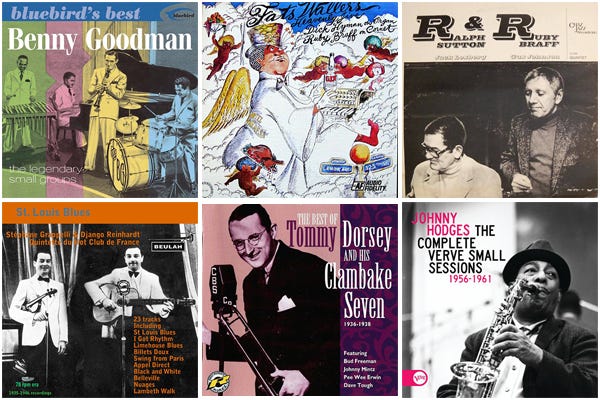May 2024
Ned Raggett on Bob Stanley, Andy Beta on Naná Vasconcelos, Harold Heath on Playhouse, Rick Anderson on small-ensemble swing, plus a grip of new recommendations
Ned Raggett on Bob Stanley’s compilations
Stanley, who like many others in the last few decades had started creating homegrown mixes as a teenager, at his best exemplifies the curious and generous spirit of such efforts via these formal releases.
Collections
Andy Beta on Naná Vasconcelos
Peripatetic by nature, Naná popped up in the unlikeliest of places during the course of his career, always game to improvise and explore with whatever musicians he could find. Perhaps that’s what relegated him to the small print on albums by bigger names?
Harold Heath on Playhouse
Between 1993 and 2012, Heiko Schäfer (1971-2017) and Ata’s Playhouse label were key in developing the minimal aesthetic in house music through a string of increasingly intriguing, leftfield, abstract, edgy, narcotic 12” house/techno/tech house releases in the second half of the ‘90s from artists including Ricardo Villalobos, Isolée, Losoul and Roman Flügel.
Rick Anderson on Small-ensemble Swing
Refer to “swing” music in conversation, and most people will assume you’re talking about big-band jazz from the 1930s, music made by orchestras led by the likes of Benny Goodman, Artie Shaw, Tommy Dorsey, and Glen Miller. Such bands were so popular and had such a hold on the popular music market during that decade that it can be easy to forget that swing music had existed in small-ensemble formats before the big-band era and continued to be made at smaller scale during that period and afterwards.
Reviews
Jeff Treppel
Seikima-II — 悪魔が来たりてヘヴィメタる [Akuma Ga Kitarite Heavy Metal]
A quick glance at Seikima-II’s makeup might make you think they were Japan’s answer to KISS, and it’s frankly shocking that they didn’t have to answer to Gene Simmon’s lawyers. Of course, the God of Thunder stole the look from kabuki, a distinctly Japanese form of theater, so really they were just taking it back.
Rhys Chatham — Die Donnergötter
If you’re wondering who first took rock from its initial phase into the post- era, a strong argument could be made for Rhys Chatham. Along with frequent collaborator Glenn Branca, he was a classically trained musician who emerged from the swamp of the late 70s New York punk scene, guitar in hand, to apply his unique avant garde outlook to the nascent No Wave sounds he heard around him.
L.A. Witch — Doggod
LA-based garage rock trio adopt a palindrome for their title and make their big goth rock move. Having successfully lit a fire under their sound on their sophomore effort, album number three ventures into the ice. It leans into the reverb and David Lynch vibes of their debut but even more so.
Phil Freeman
Cecil McBee — Mutima
When bassist Cecil McBee released his first album as a leader in 1974, he was already well known for his work with Charles Lloyd, Pharoah Sanders, Andrew Hill, Jackie McLean, Wayne Shorter, Alice Coltrane and others. But he’d never had the opportunity to showcase his voice as a composer, which he does here and then some.
Messa — The Spin
Their songs have a newfound concision, thanks to a general shift from the jazzy doom metal of previous records (yes, you can do both at once; check out Black Sabbath’s “Planet Caravan” sometime) to an occult rock sound tinged with synthwave keyboards.
Trichomoniasis — Harvest of the Killing Fields
At this point, their music retains the sonic signatures of death metal’s most unpalatable extremes (distorted guitars, machine-gun drums, guttural vocals), but the actual song structures have more in common with noise-rock or free jazz than metal.
Joe Muggs
Djrum — Under Tangled Silence
It’s elegant and embracing, you might drift off into it. But as the record goes on disjunctions open up like cracks in reality, whether through grime-like rhythmic juddering, sudden bursts of Autechrean sound design, or just sudden melodic left turns.
Unicorn Ship Explosion — There's a Rhinoceros in the Mega Church
Is this Krautrock? Beefheartian outsider rock? Synth rock? Sleazy Euro techno? Trip hop? Well, in short, yes. It manages to be all of the above effortlessly. But also, none of the above matters.
Chicks on Speed & The No Heads — Press the Spacebar
They got fed up with the pigeonholes, though, and this 2004 album – made with Spanish rockabilly-punk band The No Heads and Chilean-British techno / abstract electronics wizard Cristian Vogel, was their staggeringly successful attempt to break out of them.
Ned Raggett
Pink Breath of Heaven — Colors Make a Sound
As much a heavy modern day psych band as well – live they’ve covered songs like Spectrum’s “How You Satisfy Me,” while Field’s singing has the kind of rich-voiced flow that Kendra Smith fans can appreciate – on their debut Colors Make A Sound the group whip up nine originals that are instantly compelling head-nodding and slow-swaying bliss.
Jefferson Pitcher — The Bellows
Given the sonic reach of his various projects over three decades, it would be reductive to say there was a spirit of the mid to late 1990s still playing out, but right from its rich opening song “Carriage | Horse,” one senses the feeling of roads not taken by many since.
Peter Murphy — Silver Shade
Given all the twists and turns of Peter Murphy’s career over nearly half a century, 2025’s Silver Shade could just as easily have been a relaxed and low-key effort taking stock of time. But the remarkable thing about Silver Shade, his first studio album since 2014’s Lion and like that album produced by another longtime veteran, Youth, is that it shows Murphy still up for explorations and possibilities, not to mention happily still in possession of that strong distinct voice much in the same way Robert Smith similarly has his.
Rick Anderson
R.E.M. — Document
It was this album, with its monstrous breakout hits “The One I Love” and “It’s the End of the World As We Know It (and I Feel Fine),” that finally turned R.E.M. from beloved college-rock weirdos into global superstars.
Pere Ubu — The Tenement Year
It was Cloudland (with its Billboard-charting “Waiting for Mary,” the closest thing to a radio hit the band ever had) that bandleader David Thomas bemusedly described as Pere Ubu’s first pop album. But that’s not entirely correct: in 1988, the year before Cloudland, Ubu had released The Tenement Year, which was light-years ahead of any of the group’s previous work in terms of general accessibility and hookiness.
Culture — Two Sevens Clash
There are lots of albums that could vie for the title Dreadest Reggae Album of All Time: the Congos’ Heart of the Congos would be an obvious contender, as would Prince Far I’s Voice of Thunder and Bunny Wailer’s Blackheart Man. But for sheer seriousness of intent, bone-deep fear of God, and stern prophetic imprecation, it’s tough to imagine any release beating out Two Sevens Clash by Culture.
Chris Catchpole
Piero Umiliani — To-Day's Sound
Although never intended for public consumption as an album, the collection of tracks that make up To-Day’s Sound has provided a treasure trove of funky grooves and retro sounds for cratediggers, musicians and DJs for decades.
Bert Jansch — It Don’t Bother Me
Arriving the same year as Burt Jansch’s acclaimed 1965 self-titled debut, It Don’t Bother Me was in many ways an extension of its predecessor, itself a pared-down, folk fingerpicking masterclass from the young Scot.
Lael Neale — Altogether Stranger
A delight for anyone who considers the Lower East Side of the 60s and 70s a desirable place to spend eternity, Lael Neale’s 2003 album Star Eater’s Delight felt like a lo-fi transmission from some super-cool liminal space — Nico making contact via Alan Vega’s drum machine and a detuned transistor radio.











